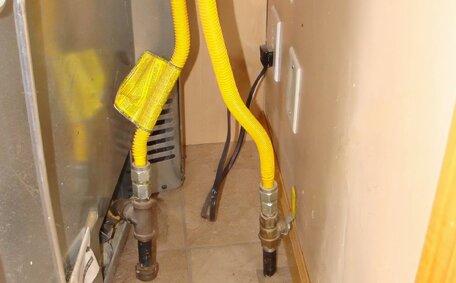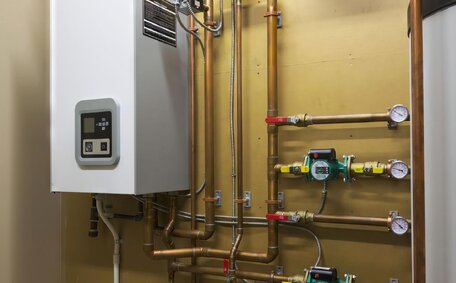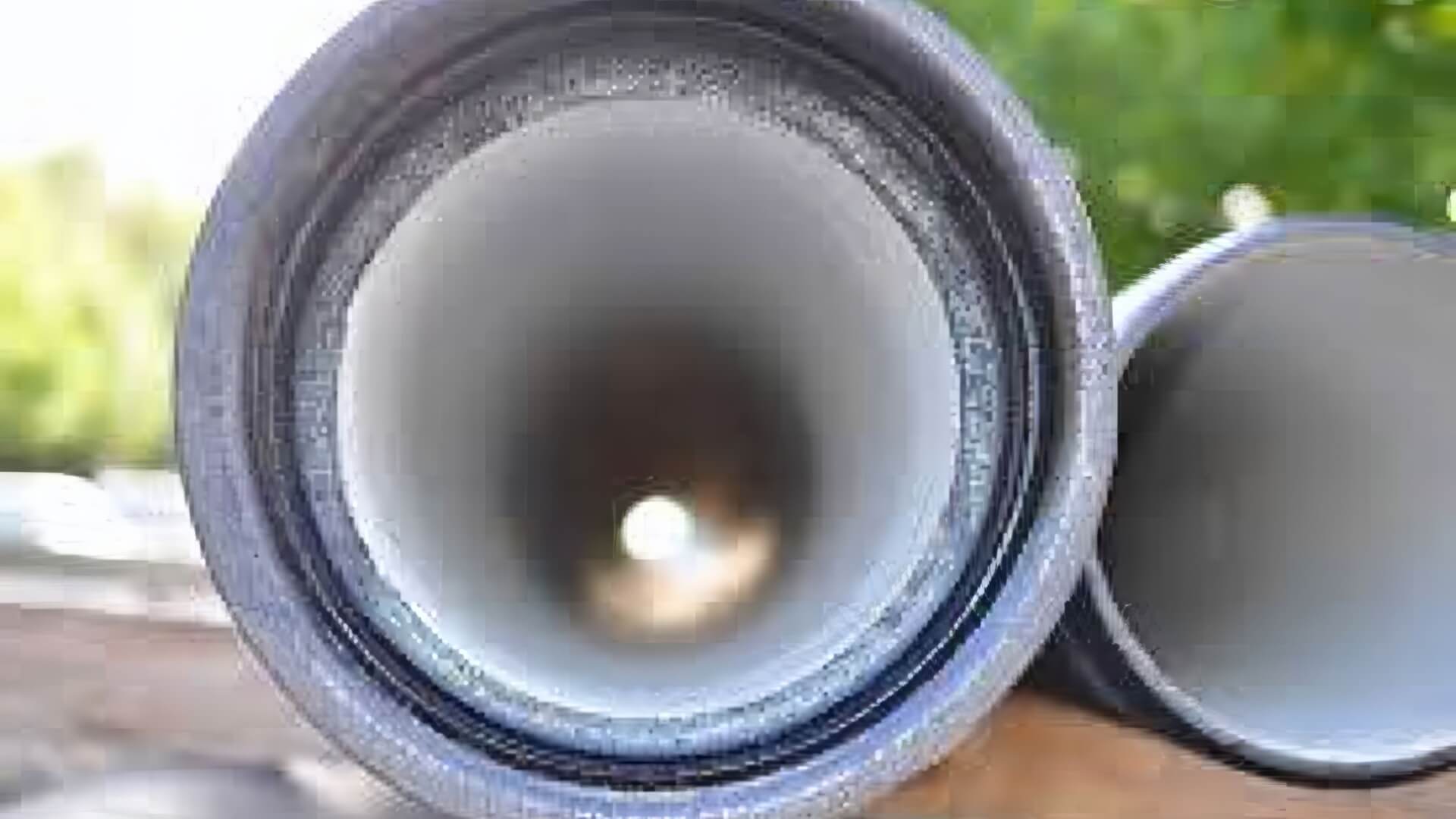Introduction to Hot Water System Thermostats
Water heater thermostats play a pivotal role in temperature regulation and can malfunction in both electric and gas water systems, necessitating diagnosis using a meter probe. When the water temperature drops below the thermostat’s set point, it activates the thermostat heating process by sending a signal to turn on the heating elements.
The thermostat’s on/off cycling ensures your electric hot water system maintains a consistent temperature.
Knowing how to test and troubleshoot your hot water system’s thermostats is vital for maintenance. Regular testing can detect issues with the water heater elements or a maladjusted high limit switch proactively. Accurate multimeter readings help prevent unnecessary repairs or part replacements.
A faulty thermostat can compromise your hot water supply and cause erratic temperatures, posing safety risks.
Key checks when testing thermostats include verifying continuity between terminals and comparing resistance readings to manufacturer specifications. Properly using a digital multimeter for testing water heater measurements is a typical aspect of understanding thermostat diagnostics. For accurate diagnostics, set the multimeter to the correct mode, ensure power is off, remove panels, and check the water temperature settings.
Safety Precautions When Working With a Hot Water System
Never compromise on safety while servicing electric hot water system thermostats and be cautious when using the probe terminal method. Here are essential precautions to observe:
- Turn power off at the circuit breaker before initiating any maintenance work. This guarantees that no electrical current is running to the heating elements.
- Give ample timespan to gauge no hot water scenarios during the cool-down phase for precise temperature measurements from within the tank. As hot water can scald, wait for it to cool before starting.
- Wear rubber gloves and other protective equipment to avoid electrocution.
- Utilise a non-contact voltage tester to check for the presence of electricity inside the water tank before touching any components.
- Have a fire extinguisher on hand in case of electrical sparks or shorts.
- Do not touch the thermostats, heating elements or wiring without first ensuring the power is off.
- Adhere stringently to the manufacturer’s directives when testing thermostats, especially if there’s no hot water or when replacing components.
- Never restore power until all access panels have been replaced and the tank fully resealed.
- Have another person present when working on the hot water heater thermostat in case of an emergency.
- Acquaint yourself with the main valve’s location to swiftly turn off water supply if necessary.
It’s crucial to make sure when sustaining your power water system, you avoid electrical shocks using the correct meter probe terminal methodology and other potential hazards. Always shut off power, allow components to cool, and use protective gear when managing your water temperature with the thermostat or other internal parts.
Tools Needed to Test a Hot Water Thermostat
- Digital multimeter - Essential for measuring electrical resistance and voltage when diagnosing electrical issues.
- Flathead screwdriver - For removing access panels
- Rubber gloves - For protection against electrocution
- Safety goggles - To protect eyes from debris
- Non-contact voltage tester - To confirm power is off
- Flashlight - To see inside the water heater
- Thermometer - For checking water temperature
- Utility knife - For cutting away insulation
- Replacement thermostats - In case current ones are faulty
You’ll require appropriate tools to safely test the thermostats in your water heater. To maintain optimal function, safely inspect internals with a non-contact voltage tester and flashlight after power disconnection. With these basic tools, you can accurately test thermostat operation and troubleshoot any issues.
The key items needed are a digital multimeter for water heater element testing, including test hot continuity checks, a flathead screwdriver for accessing the interior, and protective rubber gloves to prevent hazards.
Locating the Thermostat on Your Hot Water System
Locating the thermostat in electric water heaters typically involves removing an access panel to uncover internal parts. Here are the steps to test your water heater:
- Start by removing the outside access panel found on the side or top of your water heater to access the thermostat.
- Turn off power to the hot water system at the main circuit breaker.
- Utilise a flathead screwdriver to liberate the cutout flap’s fasteners or screws.
- Carefully set aside the access panel to reveal the bare metal.
- You may need to remove plastic insulation gently to expose the thermostat and heating elements.
- The upper heating element houses the thermostat directly, with corresponding wire leads for functionality.
- Residential water heaters typically feature both upper and lower thermostats, each with reset terminals for effective troubleshooting.
- Make note of the top thermostat secured with two screws, noting the location and wiring configuration for proper reassembly.
After powering down your electric water heater, follow the manufacturer’s instructions to examine the thermostat. Take appropriate precautions against electric shock and be sure to securely replace the access panel when testing is complete.
Using a Multimeter to Test Thermostat Continuity
To ensure your water heater keep maintains continuity with a multimeter, follow these steps:
- Before starting to test water heater thermostat, ensure all power is disconnected by switching off the circuit breaker panel, a crucial step to safely use your electrical equipment.
- Set the multimeter to measure ohms resistance, commonly indicated by the Ω symbol.
- To initiate the thermostat test, connect the red wire, symbolised by the red probe from the multimeter, to a terminal screw.
- Touch one meter lead, represented by the multimeter’s black probe, to the other terminal screw of the thermostat.
- The multimeter should indicate 0 ohms, or a value close to it, to show that the thermostat has continuity.
- Repeat this test touching the probes to the two terminals in reverse to confirm the reading.
- Initiate this test first on the upper, then upper thermostat.
A 0 ohm reading from a test hot water thermostat indicates that closed circuit continuity exists and the thermostat can be deemed working properly. Any reading higher than 0 ohms could signify an issue with the thermostat, potentially requiring a new thermostat. Be sure power is disconnected before removing and replacing a faulty thermostat.
Testing the Upper Thermostat
Follow these steps to test if it is working properly:
Always adhere to safety measures such as wearing rubber gloves and verifying power is off before testing. Ensure damaged insulation and access panels are replaced upon completion. Testing thermostats regularly can help identify problems before hot water issues arise.
Testing the Lower Thermostat
The lower heating element is directly managed by the lower element’s thermostat in an electric water heater. Follow these steps to test if it is functioning properly:
- Remove the access panel and locate the lower thermostat.
- Touch the red probe to one lower thermostat terminal, and the black probe to the other terminal.
- Reverse the probe positions and verify the 0 ohm reading.
- If you get 0 ohms in both directions, the lower thermostat has continuity.
- Inconsistent or elevated readings could indicate a faulty thermostat that may need replacement.
Check the lower section to ensure your instrument’s thermostat is free from visible damage and verify the presence of a temperature adjustment feature or the reset button. As with the upper thermostat, be sure power is disconnected before removing and replacing if faulty.
Checking Water Temperature Settings
The optimal water temperature falls between approximately 49C to 60C.
Overly hot water can scald, and too cool water can result in performance issues and dissatisfaction.
- If water temperature surpasses 49-60 degrees Celsius, thermostat adjustment is warranted. Varied temperatures may necessitate a thermostat check, adjustment, or replacement.
- Assess both thermostats to gauge the scope of temperature control.
- Consult manufacturer guidelines for proper thermostat settings based on the temperature your unit requires.
Regular checks to keep water temperature below scalding thresholds ensure the safe and efficient operation of your system. Properly calibrated thermostats will maintain the optimal balance of hot water delivery and energy efficiency.
Overly hot water can scald, and too cool water can reproximahen testing hot water system thermostats with a digital multimeter, understanding the readings is key to determining if the thermostat is working properly. Here is how to interpret some common multimeter readings:
- 0 ohms - This reading means there is continuity between the thermostat terminals. It indicates the thermostat contacts are closed and it is likely functioning correctly.
- Infinite/OL - An "over limit" reading signifies the thermostat contacts are open and there is no continuity. This could mean the thermostat is faulty.
- Fluctuating/random values - Readings that fluctuate wildly or show random values often point to a bad thermostat that needs replacement.
- High resistance - Any reading significantly above 0 ohms, such as over 100 ohms, can indicate corrosion or damage is increasing resistance. The thermostat may be malfunctioning.
- Low battery - Some digital multimeters will show a low battery warning. This doesn’t necessarily indicate a problem with the thermostat, but low multimeter battery voltage could affect readings.
If you encounter odd readings, double-check multimeter connections. Review the manufacturer’s thermostat specifications as well for expected resistance values. With some basic knowledge of how to interpret multimeter readings, you can quickly diagnose issues with hot water system thermostats.
When testing hot water system thermostats with a digital multimeter, understanding the readings is key to determining if the thermostat is working properly.
ing signifies the thermostat contacts are open and there is no continuity. This could mean the thermostat is faulty.How to Troubleshoot Faulty Thermostats
If testing determines the thermostat is faulty, here are some troubleshooting steps:
- Clean the thermostat contacts with emery cloth or fine sandpaper. Buildup of deposits can interfere with electrical contacts.
- Check that power wires and other connections to the thermostat terminals are tight and corrosion-free. Loose or corroded wires cause resistance.
- After cleaning, you can test the continuity again, and if readings are unsatisfactory, consider how to replace your thermostat.
- Compare resistance measurements to manufacturer specifications. Variance could indicate a bad thermostat.
- If issues persist post-cleaning and re-testing, learn to replace the thermostat with an identical model.
- Make certain to disengage electrical supply before removing and substituting the thermostat in your hot water heater.
- Verify wires are reconnected properly and access panels are sealed.
With some basic troubleshooting, many faulty thermostats can be repaired or replaced, restoring proper hot water system function. Always take safety precautions when working with electrical components.
When to Call a Professional
There are a few instances when it’s best to call in a professional plumber to service your hot water system thermostat:
- If you are unable to isolate the source of the problem after troubleshooting and testing the thermostat.
- If the thermostat needs replacement and you do not feel comfortable working with electrical wiring.
- For gas water heater thermostat issues, as specialised training is required.
- If there are leaks, strange noises or other signs of major malfunction in the system.
- When error codes appear that you are unable to diagnose yourself.
- For routine maintenance and inspections to keep your system operating safely and efficiently.
Our licenced professionals at Werrington Plumbing have the expertise to quickly diagnose and resolve any hot water system thermostat problems. Don’t hesitate to call us at 1300 349 338 or email for assistance.
There are a few instances when it’s best to call in a professional plumber to service your hot water system thermostat:
\ - If you are unable to isolate the source of the problem after troubleshooting and testing the thermostat.
\ - If the thermostat needs replacement and you do not feel comfortable working with electrical wiring.
\ - For gas water heater thermostat issues, as specialised training is require codes appear that you are unable to diagnose yourself.
\ - For routine maintenance and inspections to keep your system operating safely and efficiently.
\
Maintaining Your Hot Water System
Here are some tips for proper maintenance:
- Visually inspect the outside of the tank every few months for any leaks, rust or damage. Catching minor problems early can prevent bigger repairs.
- Test thermostats annually following the procedures outlined to ensure they are in good working order. Faulty thermostats are a common cause of hot water problems.
- Flush the water heater once a year to remove sediment buildup which can lead to overheating. Consult manufacturer guidelines for flushing instructions.
- It’s advisable to replace heating elements approximately every 5-10 years, or sooner in case of cracking or corrosion.
- Check water tank insulation blankets are intact and replace if worn. Insulation is key for energy efficiency.
- Examining the anode rod routinely and replacing it when necessary is key to averting tank deterioration.
Preventative maintenance helps maximise the lifespan of your hot water system. The skilled team at Werrington Plumbing can do thorough inspections and meticulous maintenance services, bolstering the reliability of your hot water system. Contact us today to schedule routine maintenance and stay ahead of problems before they happen.
Here are some tips for proper maintenance:
Visually inspect the outside of the tank every few months for any leaks, rust or damage. Catching minor problems early can prevent bigger repairs.Test thermostats annually following the procedures outlined to ensure they are in good working order. Faulty thermostats are a common cause of hot water problems.Flush the water heater once a year to remove sediment buildup which can lead to overheating. Consult manufacturer guidelines for flushing instructions.It’s advisable to replace heating elements approximately every 5-10 years, or sooner in case of cracking or corrosion.




